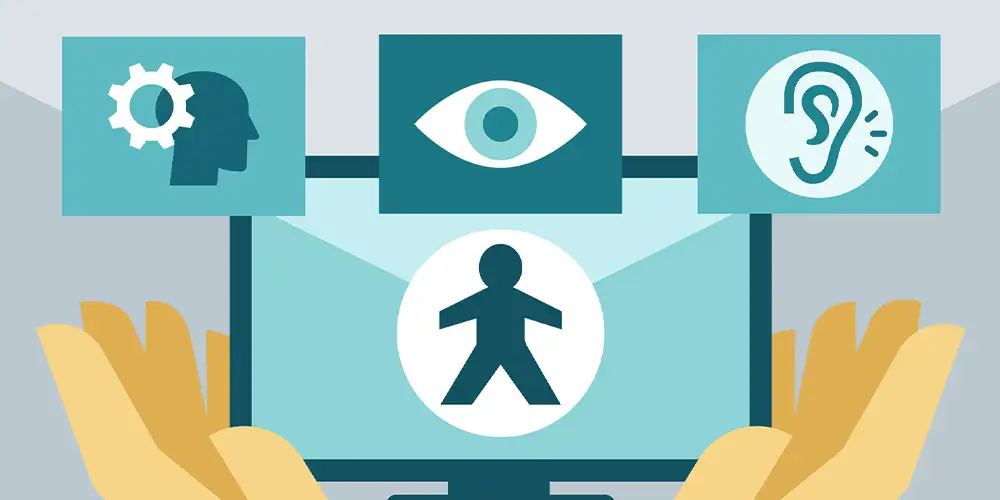Web Accessibility Best Practices 2023: Bridging the Digital Divide
Craig Valadez October 4th, 2023

Introduction:
Web Accessibility Best Practices in 2023 has progressively become the hub for information, commerce, social interaction, and more. Yet, a significant portion of the population faces challenges accessing this virtual realm. Web accessibility, especially in 2023, isn’t just a buzzword – it’s a necessity. By adhering to accessibility best practices, you ensure your digital content is open to everyone, including those with disabilities.
Understanding Web Accessibility
At its core, web accessibility means creating digital environments that are usable by all people, regardless of their physical or cognitive abilities. This concept touches on various disabilities, including visual, auditory, cognitive, and motor impairments. By embracing web accessibility best practices, businesses can boost their reputation, improve their SEO rankings, and avoid potential legal ramifications.
Examples:
- Alt Text for Images: For visually impaired users utilizing screen readers, images without alternative text become a void in their browsing experience. Example: Instead of uploading an image named ‘IMG_1234.jpg’, add descriptive alt text like ‘Golden retriever playing in a park’.
- Transcripts for Audio: Deaf or hard-of-hearing users can’t grasp audio content without written equivalents. Example: If you host a podcast on ‘The Future of Web Design’, ensure you provide a full-text transcript below the audio file.
2023 Web Accessibility Best Practices
The digital realm is evolving, and so are the best practices. Here are some of the top recommended actions for 2023:
- Keyboard Navigation: Ensure all functionalities are accessible using only a keyboard, especially for those who can’t use a mouse.
- Consistent Layout: Maintain a predictable layout throughout your website. This is especially crucial for users with cognitive disabilities, as it provides a familiar and intuitive experience.
- Avoid Automatic Media Playback: For users with certain cognitive disorders, sudden audio or video playback can be jarring. Always give users control over media.
- Clear Forms with Descriptive Labels: Forms can be a nightmare if not designed with accessibility in mind. Proper labeling aids users in understanding each field’s purpose.
- Utilize ARIA (Accessible Rich Internet Applications): ARIA landmarks help in defining areas like navigation, main content, and banners, improving screen reader users’ experience.
Example: Consider a checkout process on an eCommerce website. For a sighted user, it’s clear when an error occurs because of color cues (like red boxes). However, for a visually impaired user, such cues won’t suffice. Instead, using ARIA roles and alerts can notify them of errors, enhancing their checkout experience.
Benefits of Embracing Web Accessibility:
- Larger Audience Reach: By making your site accessible, you tap into an audience that’s often overlooked – a win-win for ethical and business perspectives.
- Improved SEO: Many web accessibility practices overlap with SEO best practices. For instance, clear headings and descriptive link texts benefit both screen reader users and search engine bots.
- Legal Compliance: With increasing legislation, such as the ADA (Americans with Disabilities Act) and WCAG guidelines, non-compliance might result in legal actions.
Conclusion
As we traverse through 2023, it’s evident that the need for web accessibility isn’t fleeting. By adopting these best practices, web designers can craft digital spaces that are genuinely inclusive. With the internet being an integral part of modern society, it’s only fair that everyone gets to experience it in its entirety.
Note: Before implementing these best practices, it’s advisable to conduct thorough accessibility audits and, if possible, get feedback from users with disabilities. This holistic approach ensures your digital space isn’t just compliant but truly accessible.
